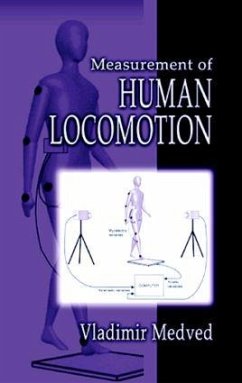The importance of measurements for the proper assessment of human locomotion is increasingly being recognized. The fields of application encompass both healthy and pathological locomotion as encountered in rehabilitation medicine, orthopedics, kinesiology, sports medicine, and the like. Measurement of Human Locomotion provides an up-to-date description of the instrument systems used for measurement of: kinematics of human movement; kinetic quantities experienced by the human body in contact with the ground; and myoelectric changes associated with locomotor activity. Physical principles behind the operation of various measurement systems are emphasized, as well as signal processing issues that must be addressed in order to obtain and use quantitative measurement variables in biomechanics. The book explains how measurement data are acquired, processed and presented to the user in the environment of a modern, computer-based laboratory. The ultimate aim is to contribute to the processes of the diagnosis and treatment of locomotion disorders. The purpose of Measurement of Human Locomotion is to provide a concise but comprehensive presentation of the systems used for the measurement of human locomotion, with a view to the assessment and diagnosis of the phenomenon. TOC:From the contents:From the History of Locomotion Measurement. Methodological Background. Biomechanical Modeling of Human Body and the Inverse Dynamic Approach. Neurophysiology of Locomotion. Reciprocal Inhibition. Placing Reaction and Reflex Reversal. Automatic Generation of Locomotor Patterns. Hierarchical Organization of Motor Control. Computational Neurosciences and Locomotion. Peripheral Neuromuscular System. Biomechanical Modeling of the Skeletal Muscle. General Properties of Locomotion Measurement Systems. The Structure of a Measurement System. Walking and Running. Take-off Abilities. Kinetic Signal Representation. Vector Diagram. Stabilometry. Pressure Distribution Measurement Systems. Comprehensive Locomotion Diagnostic Systems and Future Prospects. Systems For Comprehensive Biomechanical Measurement and Their Clinical Applications.








